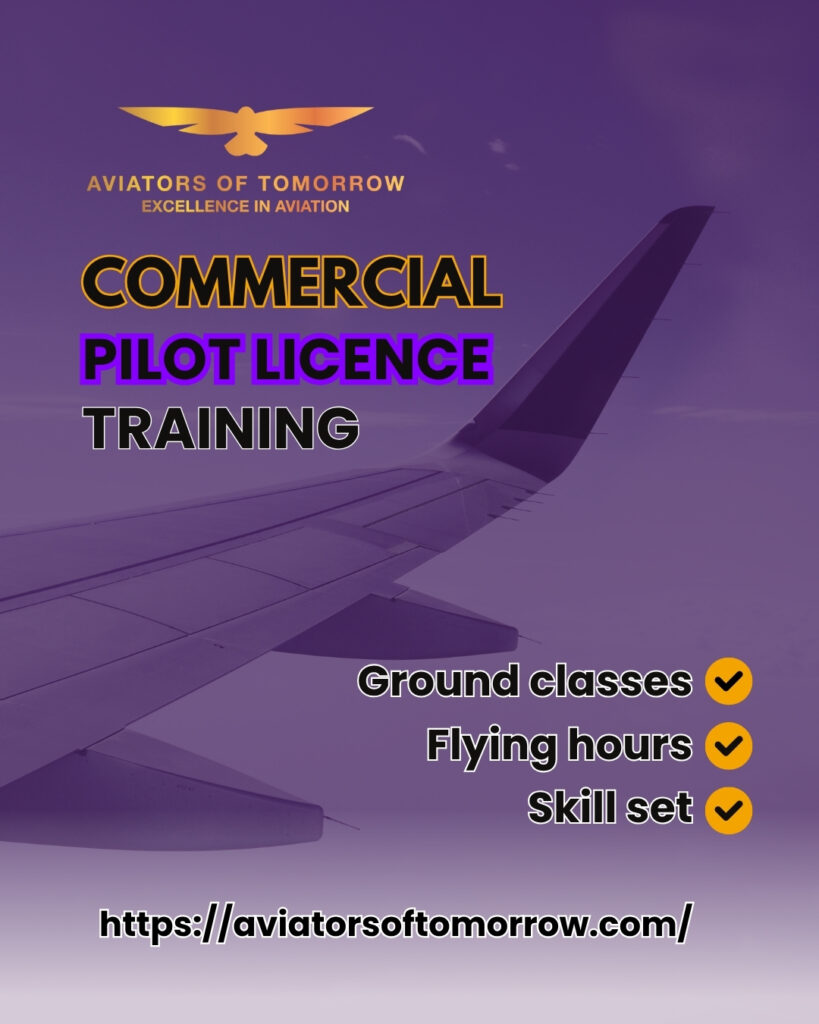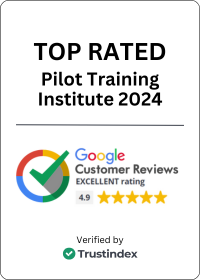Have you ever dreamt of soaring through the skies, commanding a modern jetliner, and wearing that crisp white uniform with golden stripes? For many, becoming a pilot isn’t just a career choice; it’s a lifelong dream. The very first and most important step toward achieving this dream is Commercial Pilot Licence training.
This journey is exciting but also demands commitment, discipline, and the right guidance. If you’re serious about becoming an airline pilot, understanding the details of CPL training is the key to making informed decisions about your aviation career.
In this blog, we’ll cover everything you need to know about commercial pilot licence training, from eligibility and training phases to costs, duration, and career opportunities.

Table of Contents
What is Commercial Pilot Licence Training?
A Commercial Pilot Licence (CPL) is an official certification that allows you to fly aircraft for commercial purposes. While a Private Pilot Licence (PPL) lets you fly for personal pleasure, CPL training equips you with the skills and authority to fly passengers, cargo, or serve as a professional pilot with airlines.
During commercial pilot licence training, students undergo both theoretical ground classes and practical flight hours. The training focuses on advanced aviation skills, flight safety, aircraft handling, navigation, and preparation for flying in different weather conditions and busy airspaces.
Eligibility for Commercial Pilot Licence Training
Before you dive into the cockpit, here are the basic requirements to start your CPL training:
- Age Requirement: Minimum 17 years to begin training, 18 years to apply for a CPL.
- Educational Qualification: 10+2 with Physics and Mathematics (or equivalent).
- Medical Fitness: Must clear DGCA Class 2 and Class 1 medical examination to ensure physical and mental fitness.
- Language Proficiency: Ability to communicate effectively in English, as it is the universal language of aviation.
The Training Process: Step by Step
Commercial pilot licence training typically includes three key stages:
1. Ground Training
This phase focuses on aviation theory. You will study subjects such as:
- Aviation meteorology
- Air regulation
- Air navigation
- Technical General
- Technical Specific
- Radio Telephony Restricted (RTR)
Ground training ensures that you understand the science behind flying, which is as crucial as hands-on flight practice.
You may also read our blog about “DGCA Ground Classes”
2. Flying Hours
A minimum of 200 flying hours is required to obtain a CPL. These hours include:
- Solo flying
- Cross-country flying
- Night flying
- Instrument flying (flying without visual reference)
- Training on single and multi-engine aircraft
This practical exposure prepares you to handle real-world flying scenarios confidently.
3. Skill Tests & Examinations
Once you complete your training, you must pass written exams, oral tests, and a final check ride conducted by authorized examiners. Successfully passing these ensures that you are ready for a professional flying career.
Duration of Commercial Pilot Licence Training
On average, completing your CPL training can take anywhere between 18 to 24 months, depending on factors such as weather conditions, training schedule, and exam clearance. Some students complete it faster if they dedicate full-time hours to flying schools.
Cost of Commercial Pilot Licence Training
One of the most common questions asked by aspiring pilots is about the cost.
The cost of a commercial pilot licence training in India usually ranges between ₹35–55 lakhs, depending on the flying school, aircraft type, and training location. While it may seem like a big investment, the return is rewarding once you start flying for airlines or cargo carriers.
Choosing the Right Flying School
Your success as a pilot heavily depends on the flying school you choose. When selecting a training institute, consider:
- DGCA Approval: Ensure the school is certified by the Directorate General of Civil Aviation.
- Fleet Size & Aircraft Type: A good variety of training aircraft ensures better exposure.
- Experienced Instructors: Quality training comes from experienced pilots and mentors.
- International Tie-Ups: Some schools offer type-rating courses with global airlines.
Popular flying schools in India include Indira Gandhi Institute of Aeronautics (IGIA), Bombay Flying Club, and CAE Oxford Aviation Academy. Many students also choose to train abroad in countries like the USA, Canada, or South Africa.
Career Opportunities After CPL Training
Once you complete your commercial pilot licence training, the skies open up with endless opportunities. Here are some career paths you can pursue:
- Airline Pilot: Fly commercial jets for national and international airlines.
- Cargo Pilot: Operate cargo aircraft, delivering goods across the globe.
- Charter Pilot: Fly private jets and VIP flights.
- Flight Instructor: Train future pilots while building flight hours.
- Corporate Aviation: Work with business aviation companies handling executive travel.
With the growing aviation industry in India and worldwide, the demand for skilled commercial pilots is on the rise.
Challenges You May Face in CPL Training
While the journey is rewarding, it isn’t without challenges:
- Passing DGCA exams requires dedication and consistent study.
- Managing high training costs can be stressful without proper financial planning.
- Weather delays often stretch the training duration.
- Staying physically and mentally fit is essential for long-term success.
However, with determination and passion, these challenges become stepping stones to your flying career.
Why Choose a Career as a Commercial Pilot?
Becoming a pilot is not just about earning a salary—it’s about passion, prestige, and the thrill of aviation. Some benefits of completing a commercial pilot licence training include:
- Prestige & Respect: Pilots are admired worldwide for their responsibility and professionalism.
- Travel Opportunities: See the world while building your career.
- Financial Rewards: Airline pilots often enjoy high salaries and perks.
- Job Satisfaction: Few careers offer the same sense of adventure and accomplishment.
Final Thoughts
Commercial pilot licence training is the gateway to turning your aviation dreams into reality. While the road may be demanding in terms of study, flying hours, and financial investment, the result is a prestigious and fulfilling career as a professional pilot.
If flying has always been your dream, now is the time to take action. Choose the right flying school, stay committed to your training, and soon, you’ll find yourself in the cockpit of a commercial airliner, living the dream you always envisioned.
The sky is not the limit it’s just the beginning!

